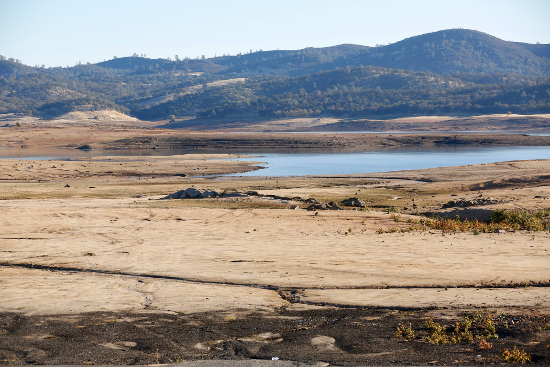California drought: challenges and opportunities for industry and policy
Is drought in California “the new normal”? – Challenges and opportunities for industry and policy
The California drought is not over. The El Niño rains has only delivered average amounts of rain and snow, primarily to the northern half of the state. Snowpack is now visible atop the Sierra, water levels are rising in many reservoirs and surface water deliveries to farmers and cities has increased. While the increased rain is a welcome change, California would have needed to see 2.5-3 times its average rainfall in order to begin ending the drought.
The Central Valley and other major food-growing regions aren’t expected to bounce back soon from an enduring water deficit that has so far cost the state’s agricultural sector billions of dollars and thousands of jobs. The food industry’s demand for water outstrips the renewable annual surface water supply in rivers and reservoirs fueled by winter rains. The difference is pumped from limited groundwater supplies that, as a result, have been dwindling for nearly a century.
As a response the overexploited groundwater supplies, Gov. Jerry Brown signed California’s Sustainable Groundwater Management Act in 2014. It calls for regional sustainability plans to be established in five years. However, key details including whether individual wells will be monitored, and exactly how sustainability will be defined have yet to be tackled.
California doesn’t face the problem of chronic water scarcity alone. Most of the world’s great food producing regions use more water than is available on an annual renewable basis. As in Central Valley, those regions then draw irrigation water from decreasing groundwater sources. Climate change is altering rainfall patterns making wet high-latitude and tropical regions wetter, and already-dry mid-latitude regions such as California drier. The latter means that just as demands on the aquifers in these mid-latitude areas are increasing, the opportunities to replenish them are decreasing.
What is needed to protect groundwater resources from depleting? What does this mean for Californian agriculture and other water intensive industries in the region? What is needed in terms of policy and farmer practices to adjust to this “new normal” of consecutive and prolonged drought?
Venue name: SIWI
Venue Linnégatan 87A, Stockholm
Venue URL
Programme
12.30 Coffee and registration
13.00 Welcome by moderator
Karin Glaumann, Programme Manager, SIWI Swedish Water House
13.05 The policy landscape of California and its impact on agriculture
Dr. Nicholas Brozović, Director of Policy, Robert B. Daugherty Water for Food Institute at University of Nebraska
13.30 Almonds, water and farmer coping strategies
Gabriele Ludwig, Director of Sustainability & Environmental Affairs at the Almond Board of California
13.55 A retailers perspective on water practices in supply chain management
Maria Smith, Manager Environment & Social responsibility, Erik Wirell, Director Imports, ICA Sweden
14.20 Discussion
15.00 Close of seminar

